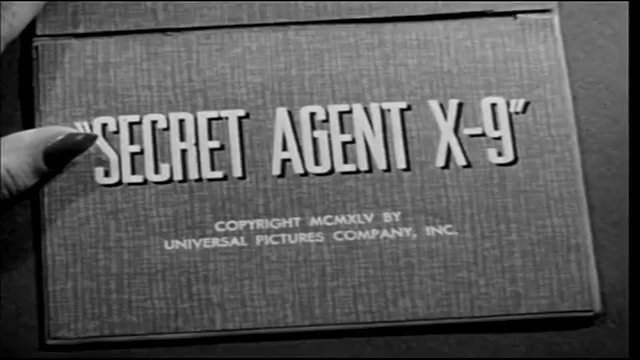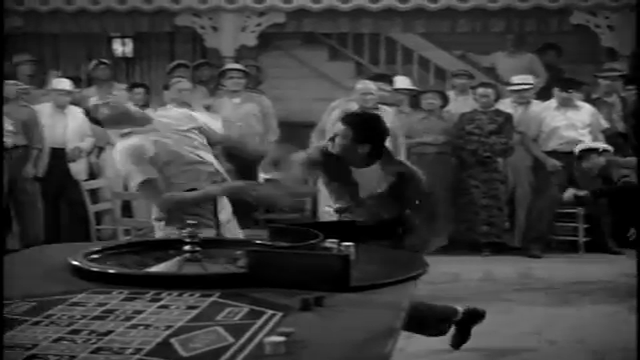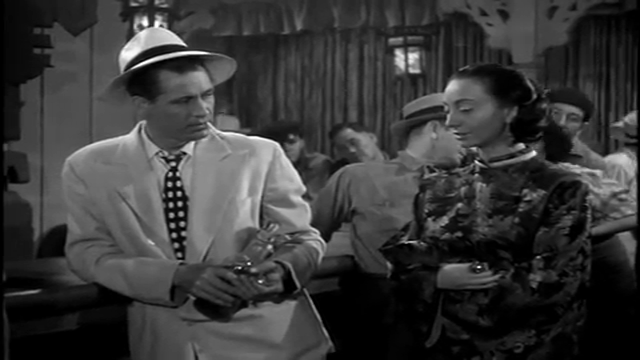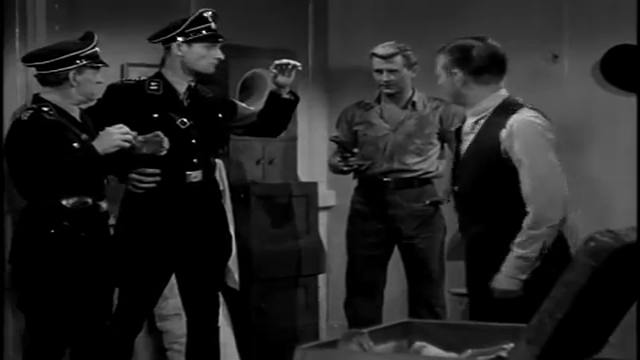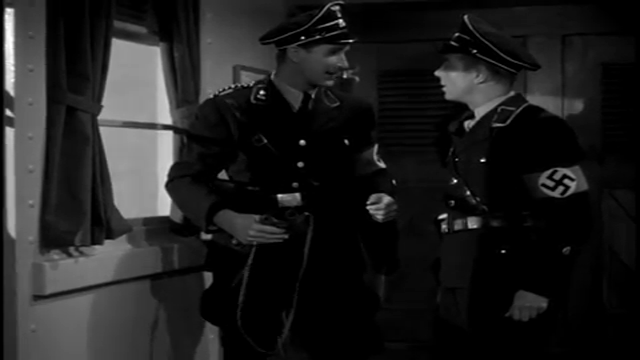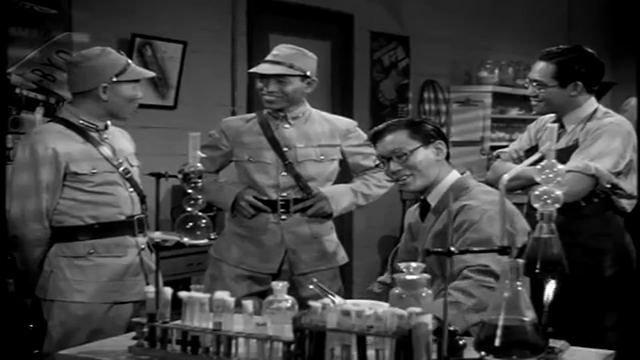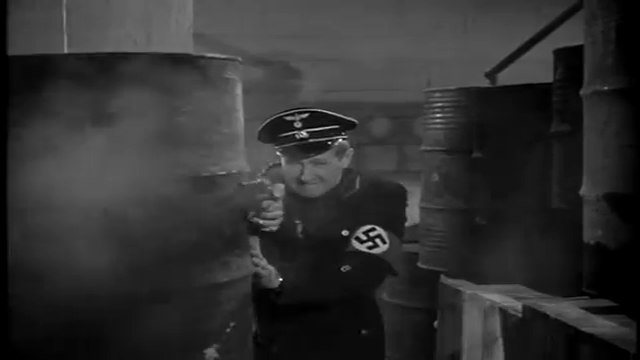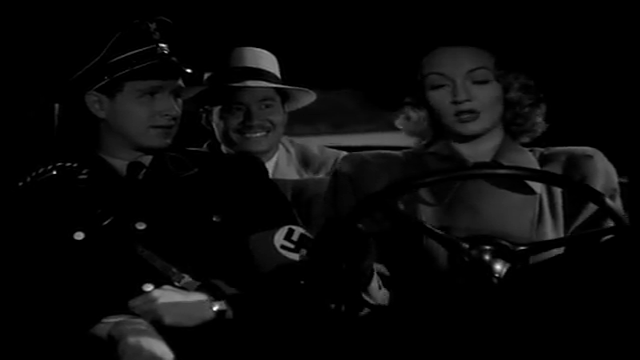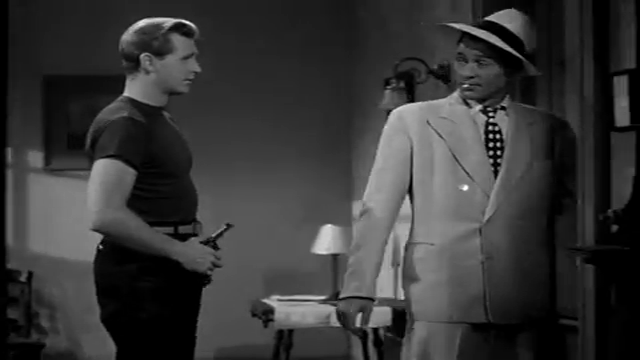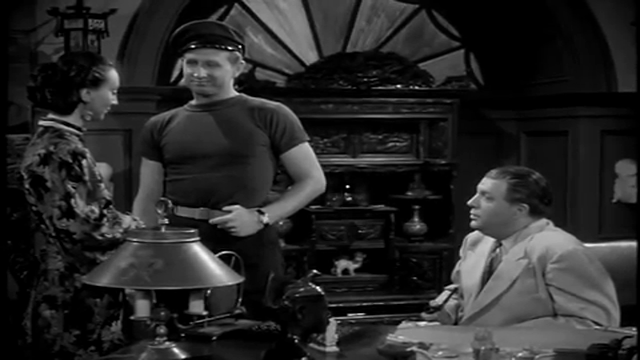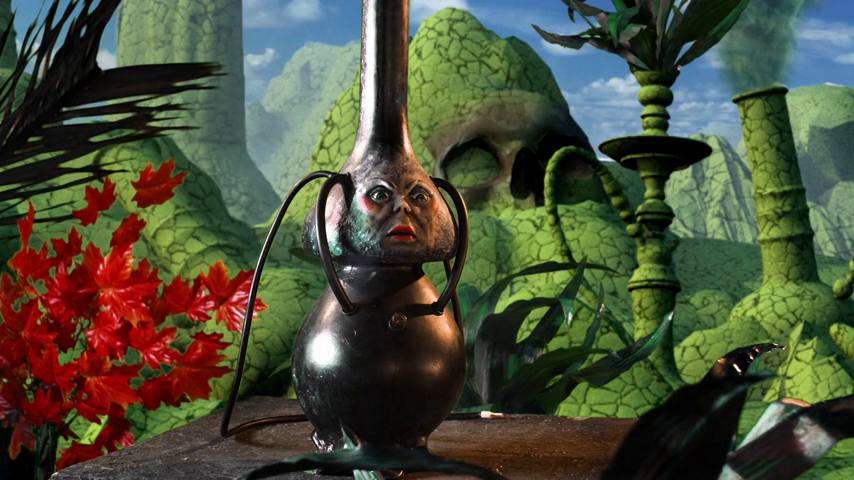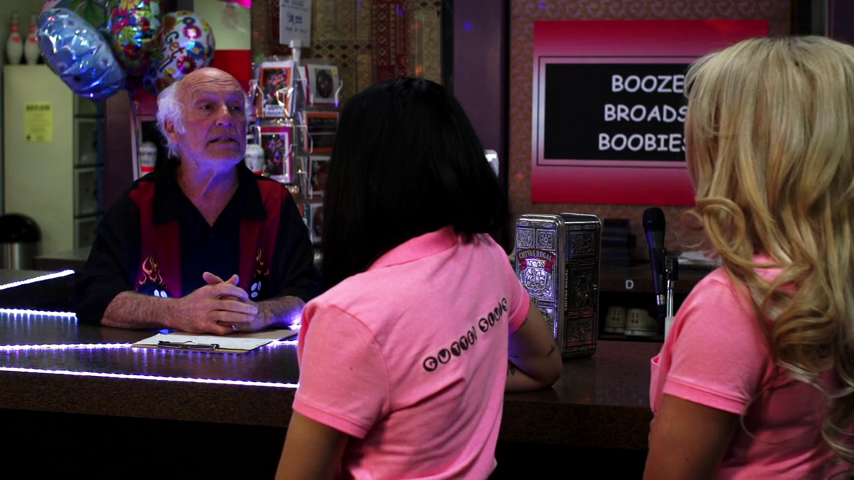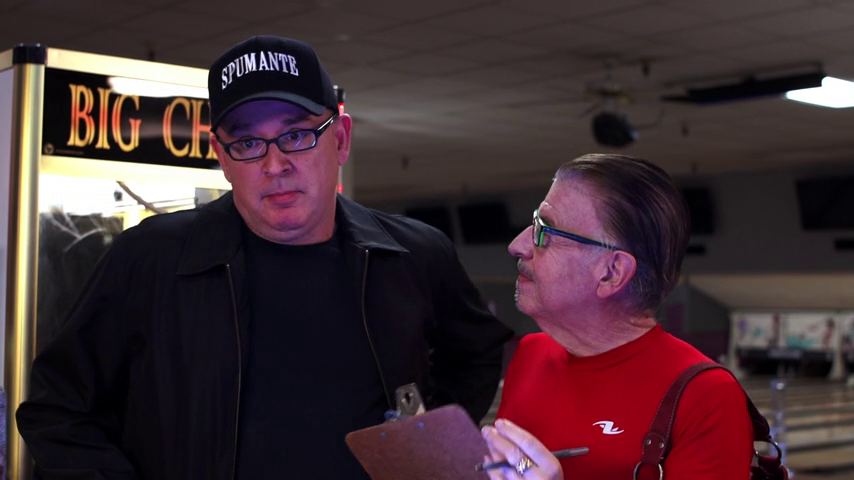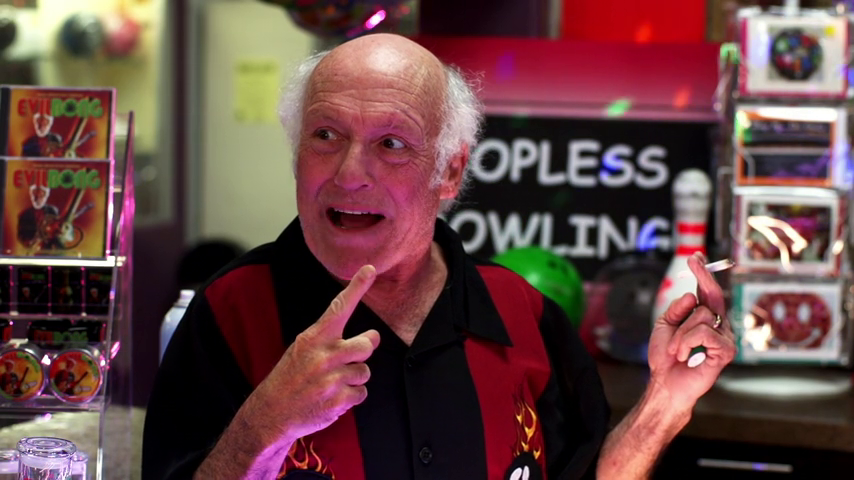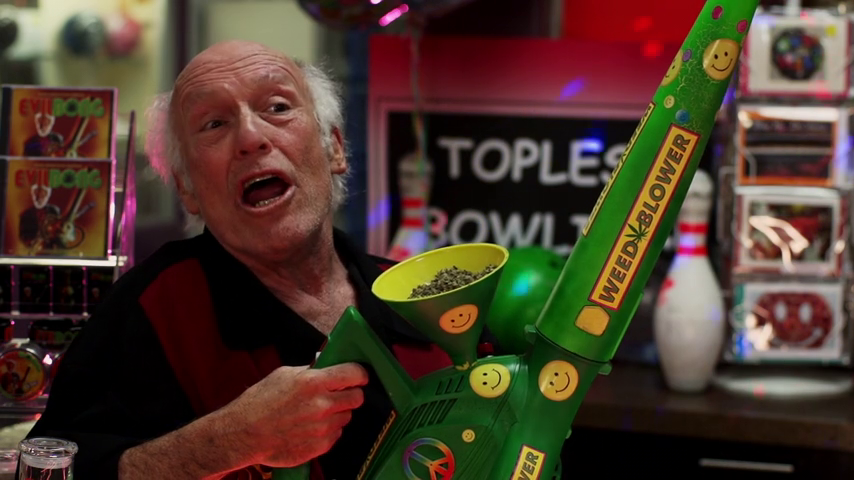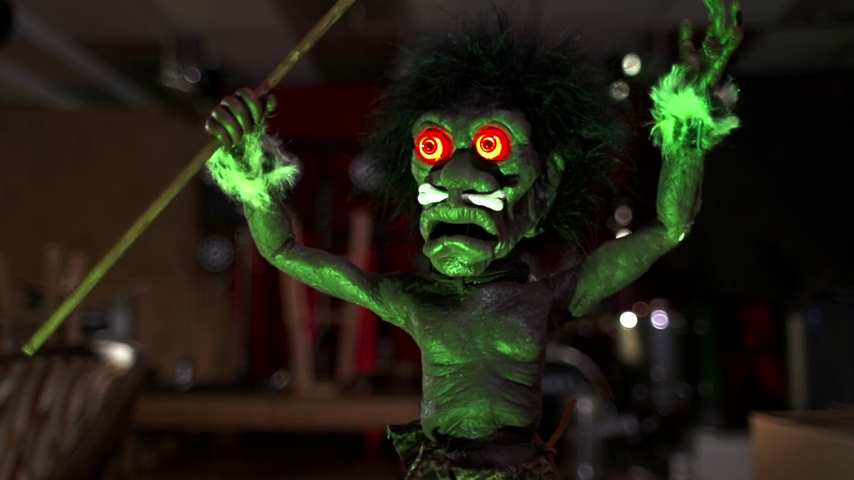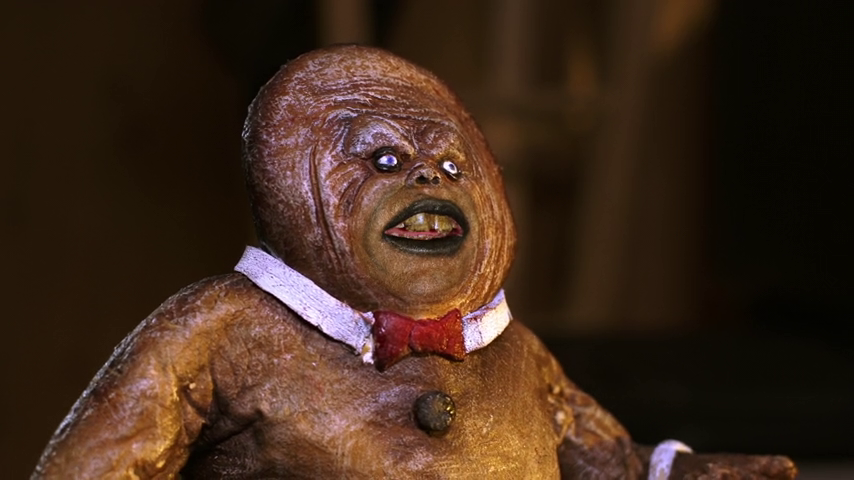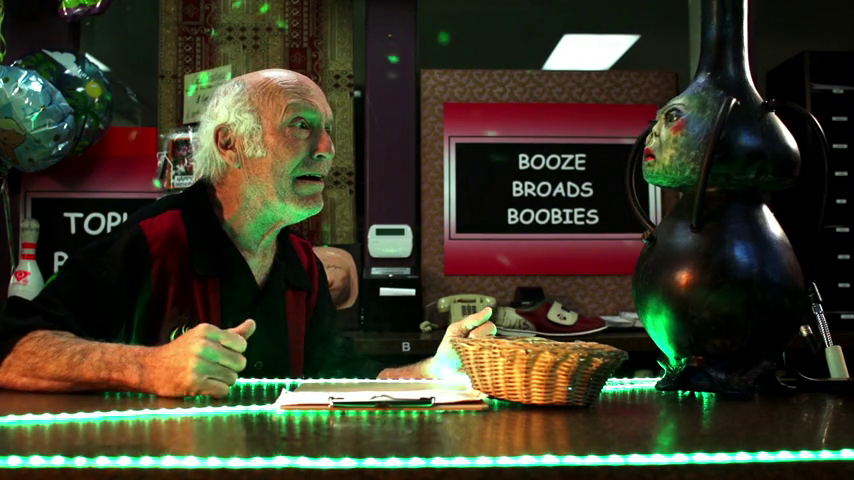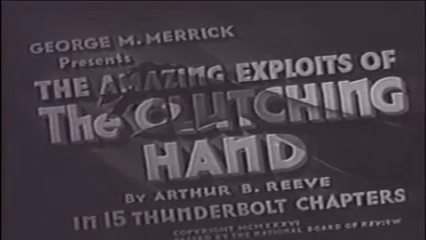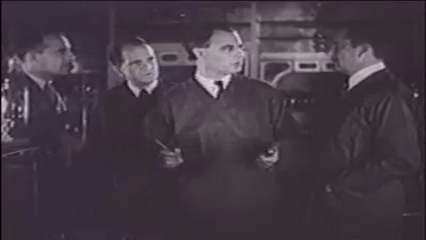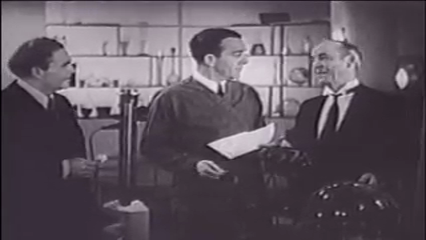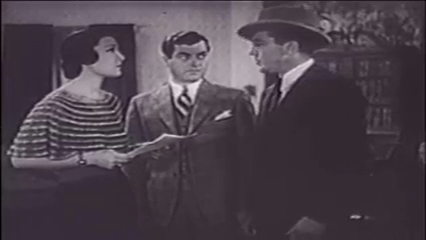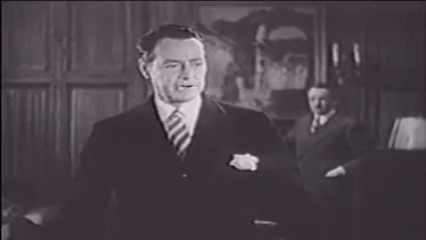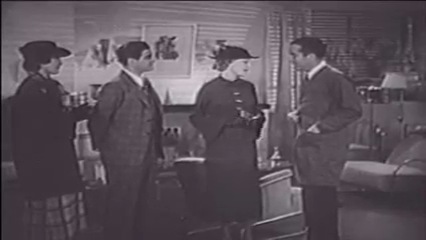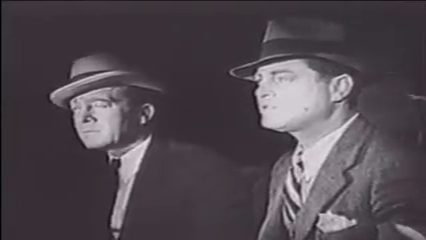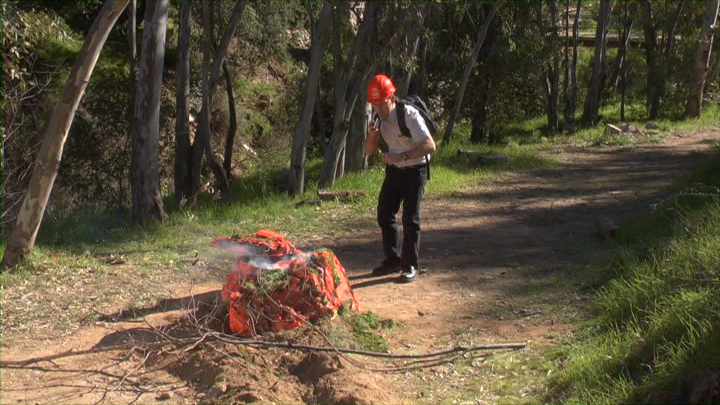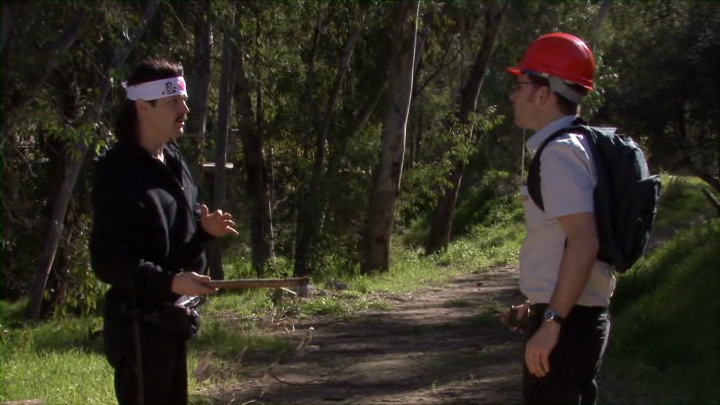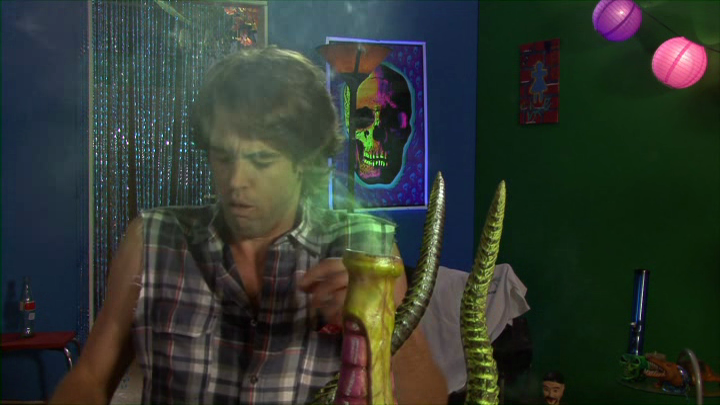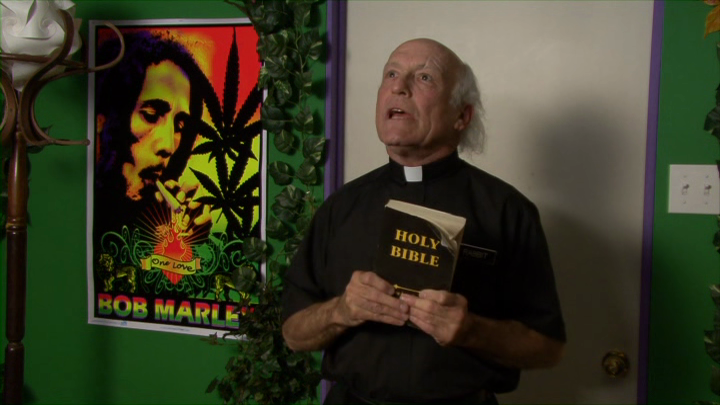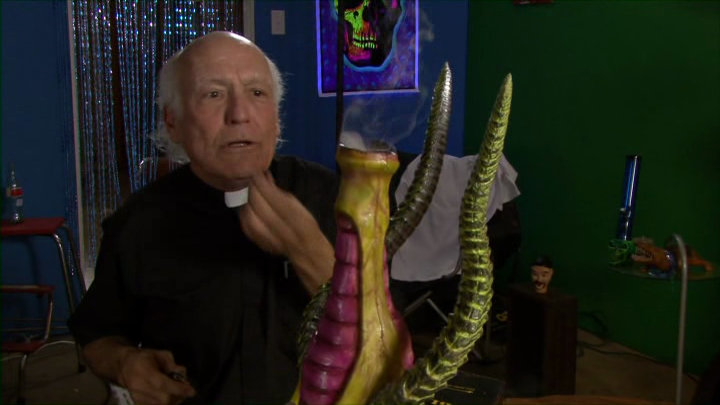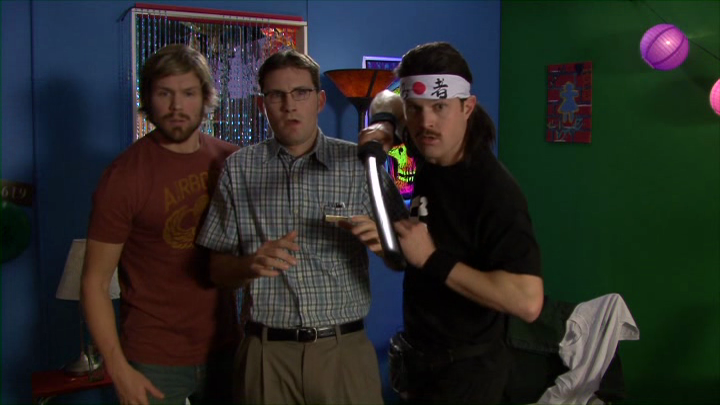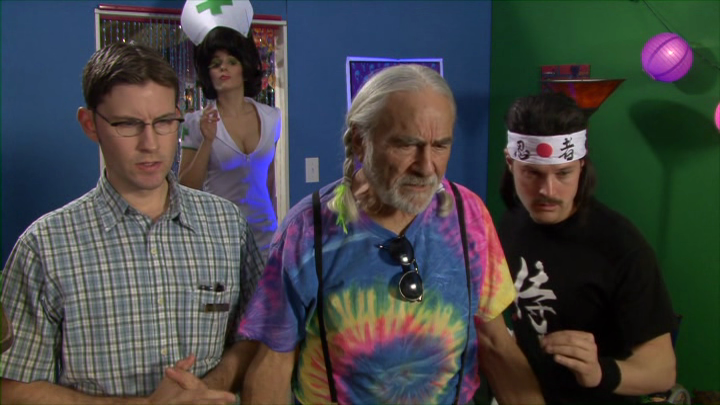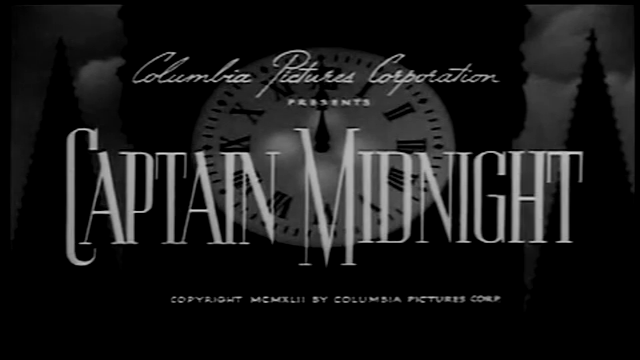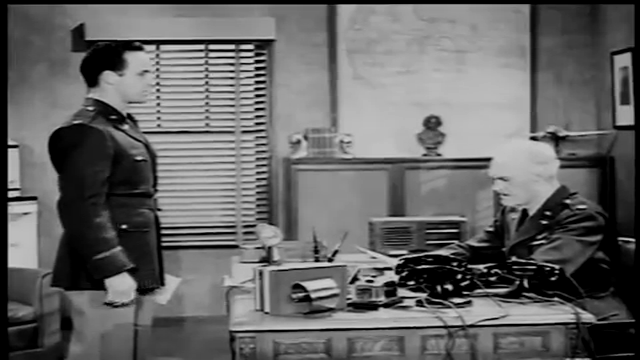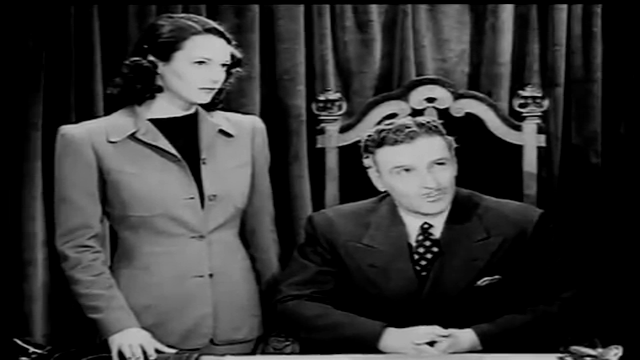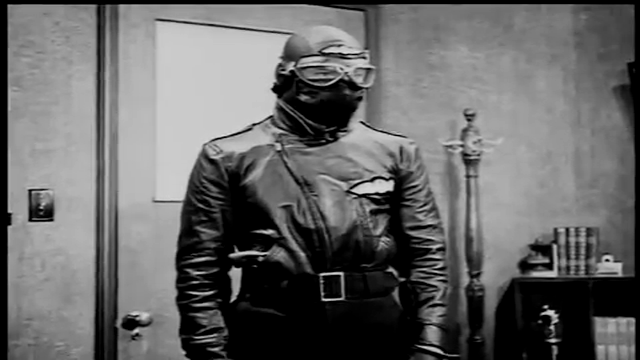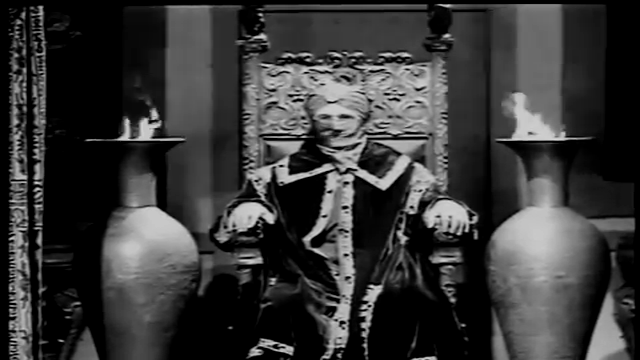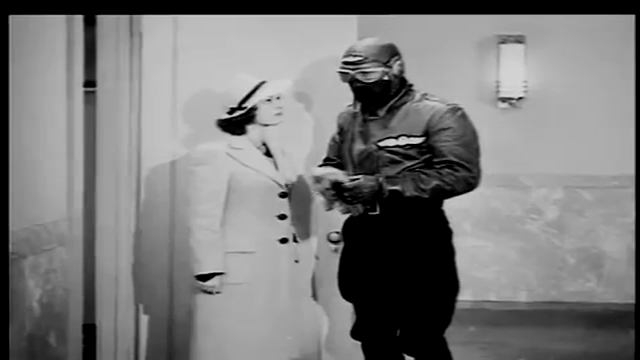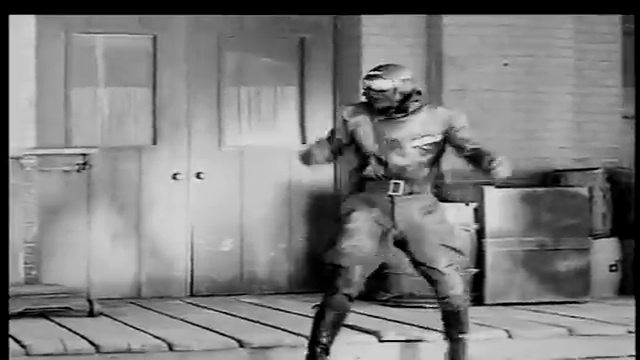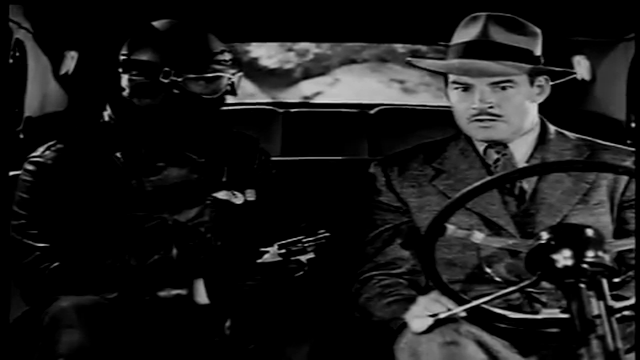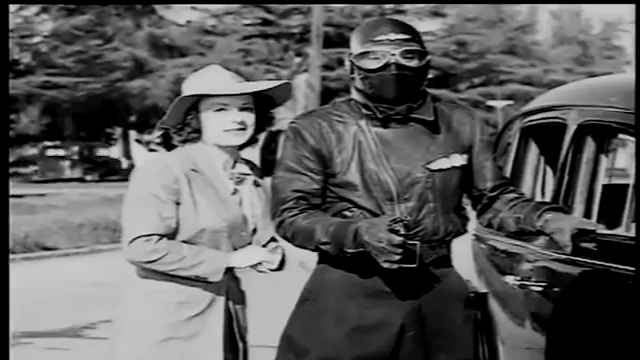-
#426 – Secret Agent X-9 (1945)
Secret Agent X-9 (1945)
Film review #426
Directors: Lewis D. Collins, Ray Taylor
SYNOPSIS: Shadow Island is an island in the Pacific ocean owned by American gangster Lucky Kamber. He has maintained his island’s neutrality during the war, but this has also meant it has become a hotbed for spies from all countries to visit and engage in shady activities. Secret Agent X-9 is sent by America to investigate a Japanese plot concerning something known only as element 722, teaming up with a Chinese agent and Australian spy to take on the Nazi and Japanese forces on the island.
THOUGHTS/ANALYSIS: Secret Agent X-9 is a 1945 serial comprised of thirteen chapters. The film takes place on Shadow Island in the Pacific Ocean, which has retained it’s neutrality on the ongoing World War II thanks to it’s owner Lucky Kamber striking a deal with the Japanese government. However, this neutrality brings in all spies from all warring nations, leading to a hotbed of subterfuge and sabotage. Japanese scientist Hakahima discovers an element known only as “722″ has the capability to replace airplane fuel when mixed with water, thus supplying an infinite fuel source. The head of the Japanese on the island, Nabura, devises a plan to send a criminal to the United States, whose face is altered by plastic surgery, to imitate the professor who discovered element 722 and get the formula from his office, which the professor himself believes to simply be a failed experiment. When Australian spy Lynn Moore learns of this, she informs her superiors, and the Americans send in secret agent X-9 to foil the plot, teaming him up with Chinese agent Au Fong. The setup to this serial is certainly one of the more interesting of the serials I have seen, with this island providing a unique setting for all the warring nations to scheme against each other. The back-and-forth plot of the protagonists sneaking around and attempting to foil the villains schemes is more typical of the serial format. However, there’s a good variety of settings and characters that keeps things interesting, alongside the tense relations between enemies that have to keep in line with the island’s neutrality. There is a lot of dialogue that simply repeats the plot points, but that’s not too uncommon for serials where viewers may not have watched all of the chapters.
The characters are a pretty interesting bunch, and offer a decent amount of variety. Many of the nations involved in the war are represented within these characters, with their own personalities that make them stand out. Secret Agent x-9 himself is played by a young Lloyd Bridges, and is definitely a strong lead, with his shiny blond hair, buff physique and charming personality. Au Fong, the Chinese agent, is played by Keye Luke, who played Kato in the Green Hornet serials, and is a good sidekick. Lynn Moore as the Australian double agent (who has an American accent) who pretends to work for Japanese forces with her radio broadcasts has a fair amount to do, particularly in comparison to other “token females” that are usually found in these serials. There’s also the Nazis that are fairly convincing in their full uniforms, as usually they are only referred to as a “foreign power” and never in the full uniforms. This goes a long way in giving the serial a convincing setting. The main protagonist is Nabura, a Japanese woman, who is played by a white American actress in makeup. This is not unusual at the time, but at least most of the other (male) Japanese characters are played by Asians. Her character comes across as sufficiently scheming and evil, but her portrayal by the actress constantly has her eyes half closed and looking at the floor as if she is reading her lines that are offscreen, which is distracting. Lucky Kamber, the owner of the island, in his portrayal in keeping the island neutral in the war, also has an interesting role as he tries to keep everyone else from tearing each other up. Other minor characters such as Solo, who sits at the same spot playing tiddlywinks for most of the film, and the French hotel owner Papa Pierre, also have their own personality and look which makes them fairly memorable and allow them to bring their own unique flavour to the scenes they are in. It is very rare to find a serial with such a varied cast and to make them interesting enough across the entire serial, but this serial definitely goes a lot further than others.
The setting of Shadow Island provides a decent variety of locations, from the casino, the Nazi ship and the hotel run by Pierre. They are all fairly distinct from one another, so the viewer can keep track of where they are. As mentioned, the characters all have a distinct appearance, from the Japanese soldiers to the Nazi uniforms, their is little doubt about who is who. Probably the weaker elements of the serial is the lack of action sequences, which revolve around the typical fistfights and car chases that you would expect to see. Most of the serial is focused on the intrigue and espionage played out through the characters, so it is important to follow the story. The cliffhangers aren’t too interesting, but there’s one or two novel traps the heroes have to escape from. Overall though, I think Secret Agent X-9 has an interesting and quite unique setup, alongside an array of distinct characters. The heroes are likeable, and the villains despicable, with a few morally grey characters as well to make things interesting. Some elements of the plot are a bit more typical, and the constant re-iteration of plot points can be a little tiresome. There’s less emphasis on action and more on espionage so perhaps some people (particularly younger viewers) may find it a little tiresome, but it distinguishes itself enough to make it a good and fairly unique example of the genre.
-
#425 – Evil Bong 420 (2015)
Evil Bong 420 (2015)
Film review #425
Director: Charles Band
SYNOPSIS: Having escaped the bong world, Rabbit sets up a bowling alley to fulfil his dreams. While he is welcoming his guests for the opening night, Ebee, the evil bong herself, along with the Gingerdead man, who is also trapped in the bong world, arrange to travel to the bowling alley and return Rabbit back to the bong world…
THOUGHTS/ANALYSIS: Evil Bong 420 is a 2015 comedy horror film and the fourth film in the Evil Bong film series. Following the last film, where Rabbit was trapped in the bong world, where the evil bong creates illusions to keep people their forever, he decides to follow his dream and opens a topless bowling alley where people can smoke weed. That…is basically the plot of the film. With a run-time of only fifty-three minutes, it’s barely a film at all, and even then it still seems to have trouble filling the screen with content. Most of the first half of the film is just dialogue, with Rabbit welcoming the various guests into the bowling alley. None of these characters are particularly interesting, and only serve as a stereotype to make very specific jokes. You would think that these characters are being introduced only to be killed off later as this is a horror movie after all, but no; none them are killed and only one gets an injury. The whole setup just seems pointless.
Apart from all the new characters that are introduced in the film for no reason, there are a few returning characters, such as Rabbit, who seems to have become the main character of the series now, and Larnell, who is stuck in a love triangle. Of course, Ebee the evil bong herself returns, but spends most of the movie in cut-aways to the bong world, where she engages in trash talk with the “gingerdead man.“ I imagine these scenes are hilarious if you’re stoned watching a bong and an evil gingerbread man arguing with each other, but otherwise they’re pretty uninspiring. The gingerdead man himself is a character from another film series (unsurprisingly called the gingerdead man) made by the same production company, and previously crossed over with the evil bong franchise in the Evil Bong vs Gingerdead Man film of 2013. The character himself is perverted, dirty and a nasty bit of work, but never gets round to killing anyone. The focus seems to be much more on the gingerdead man than the evil bong, which is distracting, and gives the film a different feel than its predecessors. All of the other characters apart from Larnell and Rabbit are however missing from this film, and that makes it feel pretty empty.
The Evil Bong series has definitely not been a high production affair, and Evil Bong 420 definitely continues that. The action is entirely limited to the bowling alley, which is in keeping with the minimal sets of the other films (although they had at least two or three). Someone at least knows how to frame a shot and edit a scene in this film, as even though the dialogue goes on for far too long, at least the camera work breaks up the monotony a little. The CG is pretty bad, but that’s expected. There’s definitely a change in tone with this film, as it doesn’t really make much attempt at a story, and instead just focuses more on being a lot more explicit and crude, mostly in the form of much more nudity and sex jokes. It overall feels a bit tasteless and devoid of any substance (not that there was much to begin with in this film series). On the one hand, I suppose it is appealing more to people who are watching this film while high, as they will have no real concern for the story, but the film still is mostly a lot of dialogue and set-up for things which don’t happen. There’s perhaps one or two funny jokes in the first part of the film, but the flat acting shaves off some of it’s impact. Overall, I think it’s fair to say that Evil Bong 420 is the low-point of the franchise (so far), and is fairly mindless in it’s story, set-up and characters, with an altogether tasteless and crude sense of humour.
-
#424 – The Clutching Hand (1936)
The Clutching Hand (1936)
Film review #424
Director: Albert Herman
SYNOPSIS: Dr. Paul Gironda has discovered a formula for turning ordinary metal into gold, a discovery that prove very valuable for the corporation he works for. Before he can reveal this discovery however, Dr. Gironda is kidnapped by a criminal known only as “The Clutching Hand,” and master detective Craig Kennedy is assigned to the case. Along with his journalist friend Walter Jameson and Gironda’s family, must find the professor and bring down the criminal plans of the clutching hand once and for all…
THOUGHTS/ANALYSIS: The Clutching Hand is a 1936 movie serial composed of fifteen chapters. It is based on the Craig Kennedy detective novels, most specifically, the final one that was written by their author Arthur B. Reeve. The film starts off with scientist Dr. Paul Gironda finishing a formula for synthesising gold. However, before he can reveal the formula to the board of directors for the company he works for, he is kidnapped, along with the formula. Detective Craig Kennedy is assigned to the case and along with his friend, journalist Walter Jameson, they work to find Dr. Gironda and stop the criminal mastermind known only as “The Clutching Hand” from obtaining the rest of the formula. The setup is a very familiar one in the serial format, and offers no surprises. The main problem with the story is just how boring it is. With a runtime of just over five hours, there needs to be plenty going on to keep the viewers interest, but there really isn’t. The constant back-and-forth between trying to rescue Gironda and finding the missing pages of the formula gets old fast, and there’s no real variety to the scenarios that play out on screen. Sometimes the serial just spends time explaining something that’s going on, which really drags. There’s a secondary plot concerning a criminal who has just been released from jail and his connection to Gironda’s family, but I didn’t even notice it while watching. At one point Gironda is rescued, only to be kidnapped again on his way home; it is really dull and repetitive.
The characters are again just the usual types as you see in these serials. Most of the time you’re just watching men in suits talk or throw punches at each other without much distinction. Craig Kennedy perhaps breaks the mould a little, in that he is not the young, dashing hero you would expect, but a more rough-looking, middle-aged detective. Gironda’s daughter and wife are the two female characters, who exist to either be kidnapped or provide secretarial duties. The Clutching Hand himself takes on the role of the masked villain whose identity is not revealed until the final chapter, and issues orders through a screen to his numbered henchmen. Again, nothing extraordinary there. The other minor characters are not worth remembering, as they serve little purpose other than to fill out the fight scenes.
The serial reminds me a lot of the Blake of Scotland Yard serial of 1937, in that it was produced by an independent company under similar constraints. But when the big studios were putting out serials like Flash Gordon in 1936, there’s no way these smaller serials would be of interest. There’s very few sets in this serial; and the constant re-use of a hotel setting where secret meetings take place makes you feel like you’re going around in circles watching the same thing play out in the same place chapter after chapter. The action scenes are dull and unchoreographed, with the film clearly being sped up to make it look more exciting, but the near-complete absence of any background music and the lack of choreography that shows when people fall over before they are even punched means it’s not very believable. The car chases have no interior shots of the passengers, and thus feel disconnected from anything plot-wise. Perhaps the only interesting part of the serial is the very end when (spoilers) The Clutching Hand is revealed to be Dr. Gironda himself, who apparently made up the formula for synthesising gold in order to recoup his massive losses on the stock market. It also turns out that his daughter is actually not his daughter at all, but that of the criminal Mitchell who we saw released at the beginning of the serial, and Gironda tries to find a way of disposing of him before he can learn the truth. This plot, while actually interesting, doesn’t really go anywhere, and has little impact on the main story. As the gold formula was a fake the whole time and Gironda wasn’t actually kidnapped, then you can conclude that the whole story was essentially pointless, and there is no payoff for watching five hours of this back-and-forth. I would advise skipping The Clutching Hand, it is a dull and poorly produced serial that, while having a few good ideas, simply doesn’t compete with the behemoths of the serial industry.
-
#423 – Evil Bong 3D: The Wrath of Bong
Evil Bong 3D: The Wrath of Bong (2011)
Film review #423
Director: Charles Band
SYNOPSIS: A strange meteorite crashes onto earth, and a man discovers a bong inside of it. Meanwhile, Alistair McDowell finds it later on alongside his old buddy Larnell, and when the bong coincidentally is bought by their old roommates Brett and Bachman, the group must again stop an evil talking bong from trying to take over the world…
THOUGHTS/ANALYSIS: Evil Bong 3D: The Wrath of Bong is a 2011 comedy horror film and the third film in the Evil Bong series. The film opens up randomly with a man burying his wife in the woods after he seemingly killed her. This plays no part in the story other than this opening scene. As he is walking home, he finds a meteorite that has crashed to Earth, and inside is surprisingly a bong. Later on, Alistair McDowell, the protagonist of the previous films, now working for the Space Institute, finds the meteor and undertakes an analysis. He runs into his old friend Larnell, who remarks he didn’t recognise him (a reference to his recasting, which was also done in the second film), and explains he has been training with a “ninja master,” and as usual is knee-deep in conspiracy theories. Meanwhile, Brett and Bachman, now running a weed shop, buy the mysterious space bong off the old man that found it in the meteorite, and find that it is once again an evil bong that wants to take over the world. The story is practically identical to the previous films: an evil talking bong is trying to take over the world, and anyone that smokes from it is taken into the inner “bong world” where the bong tricks it’s victims with illusions. The remaining cast must venture into the bong world to rescue their friends and defeat the bong. Simple stuff, but it has to be simple when you’re a film that’s designed for people to watch when high. Being the third film in the franchise (not since Attack of the Killer Tomatoes has a film franchise been so unnecessary), there’s actually evil bong lore that the film dives into which establishes continuity between the films, but as I said, you’re not going to be too focused on the plot when watching this.
The cast is made mostly up of characters from previous films, which provides a sense of continuity, even though it’s not necessary. Alistair, Larnell, Brett and Bachman are the same guys from the previous films, and nothing has changed much for them. Rabbit, the delivery guy who for some reason seems to have become a main character, is now a priest, and Larnell’s grandfather, now calling himself Dr. Weed, is fully converted to supporting marijuana after his escapades in the jungle in the previous film. And of course, the original evil bong herself turns up to offer advice on defeating the new space bong, with her usual sassy attitude. The expanded cast means there’s a bit of variety between their different perspectives, but there’s no stand-out performances of character developments.
The main problem with this film is it is almost exactly the same film as it’s predecessors, without adding anything new to proceedings. The effects are a bit better, and there’s more than two sets unlike the previous films, but there is so much time spent on the characters standing around talking that it becomes a bore. When characters start trying to explain their motivations it becomes difficult to follow, and there’s always a feeling of it simply not mattering whether you know their motivations or not. Ideally, the film should be breaking up this dialogue with some funny one-liners or jokes, but there’s barely any of that. The bong only really becomes the focus of the last act of the film, which under-utilises the main draw of the film. Despite all this, I think this one still improves on the second one just because of there being more than two locations, and the lore of the evil bong series starts to give the characters and ideas a bit more substance. The acting is still flat, and the budget is still low, but it’s still going to appeal to it’s target audience with plenty of weed smoking, ridiculous voice-overs, and partial nudity.
-
#422 – Captain Midnight (1942)
Captain Midnight (1942)
Film review #422
Director: James W. Horne
SYNOPSIS: Professor Edwards has invented a new type of radar that will surely help the U.S. government in the war effort. However, a foreign power has employed criminal mastermind Ivan Shark to steal the device for their own use. Ace pilot Captain Allbright uses his secret identity of Captain Midnight to try to stop Shark and his men before the device falls into their hands, and to stop Shark’s bombing of American cities using his own aircraft…
THOUGHTS/ANALYSIS: Captain Midnight is a 1942 movie serial based on the radio plays of the same name. The plot is fairly straightforward and very familiar if you’ve ever seen a movie serial from this era: Ace pilot Captain Allbright uses his masked alter-ego Captain Midnight to stop a criminal from stealing a new weapon and selling it to an enemy government. It’s the same plot used through many wartime serials that would have had contemporary relevance. Unfortunately, there isn’t much content to separate it from the rest of similar serials, as there are plenty that use masked alter-ego’s, and also lots that centre around the use of planes. While using the characters from the popular radio play would have brought in extra viewers, there isn’t much uniqueness that viewers will get from the serial. The villain’s plots of stealing a new invention and bombing American cities are a bit interchangeable, and the serial moves back and forth without any real continuation or progression of the plot, resulting in very little development over the course of the fifteen chapters. Like every other serial, each chapter ends in a cliffhanger in which Captain Midnight faces certain doom only for it to be quickly resolved at the beginning of the next chapter. While these resolutions are usually anti-climactic, the serials produced by Columbia Pictures often have the least creative solutions, with Captain Midnight mostly just escaping car crashes or explosions by just walking from them a little dazed. In one such cliffhanger, he just walks away from a plane crash and jumps into a fistfight, which is quite ludicrous even by the serial’s standards.
Captain Allbright/Midnight is the typical serial hero: the square-jawed all-American hero who gets into plenty of fights and daredevil escapes. There doesn’t seem to be much point in his alter-ego: everyone seemingly knows who he is, and it wouldn’t matter if he was exposed or not. His “Secret Squadron” who aid him in his heroic deeds don’t really have a part to play, and what little we see of them shows they only fill very typical roles of sidekicks. Major Steele, Midnight’s government contact, is the authority figure who gives the orders and who Midnight plans with to catch the villains. The main villain himself, Ivan Shark, has a distinguishing trait in that he is a master of disguise, and subsequently disguises himself as a number of the serial’s characters over the course of the fifteen chapters; including Captain Midnight himself. His disguises also come with dubbed voice-overs of the characters he is playing, which is very obvious. It’s a trait that was used by the protagonist in The Spider serials, and definitely used to better effect there. Shark’s daughter Fury (that is her name apparently) has a role as second-in-command, but doesn’t really play much of a part. At the start of the serial, she seems reluctant to follow some of her Father’s schemes, leading me to believe she may be a character that swaps sides and questions her loyalties, but that is perhaps too complex for this serial, as this trait is soon forgotten and quickly becomes just another flat villain giving orders.
The main problem with Captain Midnight is that it’s story goes nowhere. There’s no build-up, and the focus keeps shifting so it feels like nothing of consequence is happening, which means it is going to be difficult to keep viewer’s attention over the course of fifteen chapters (or four and a half hours). Some of the stunts are decent, but nothing too outstanding, and there’s not enough plane-based scenes that you might expect from the titular character. The villain’s motivations are confused and all over the place, which further confounds any attempt to advance the plot. Although it doesn’t stray from the typical serial formula, there’s definitely better examples of the format you can watch.
